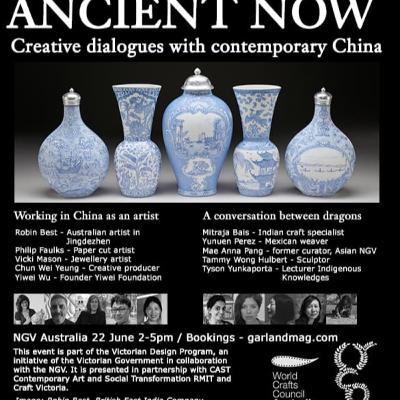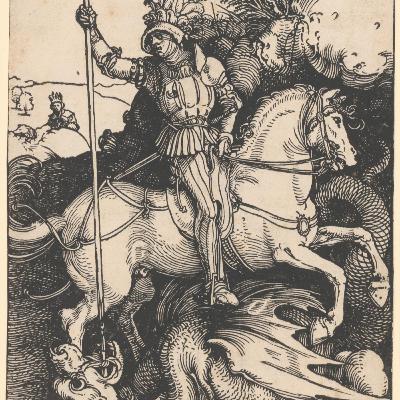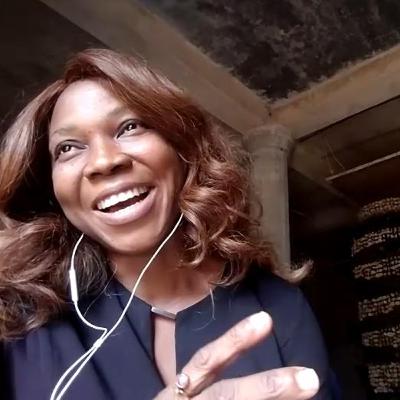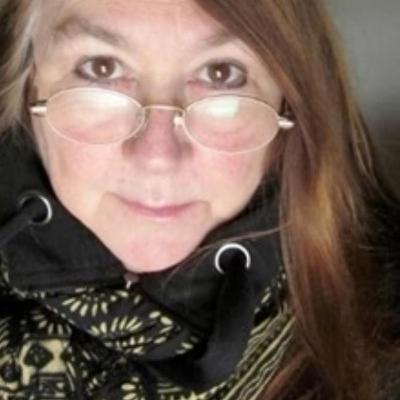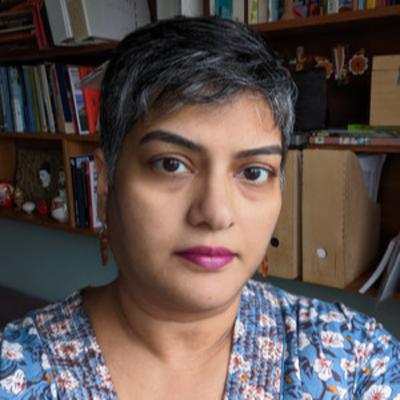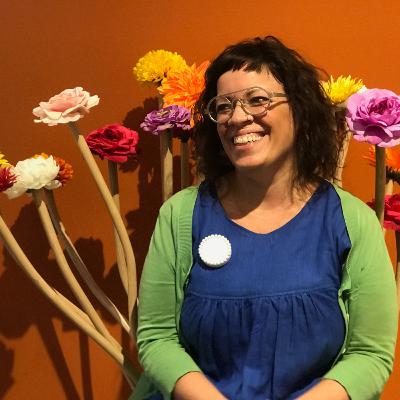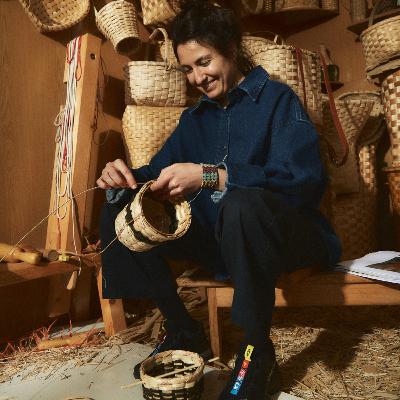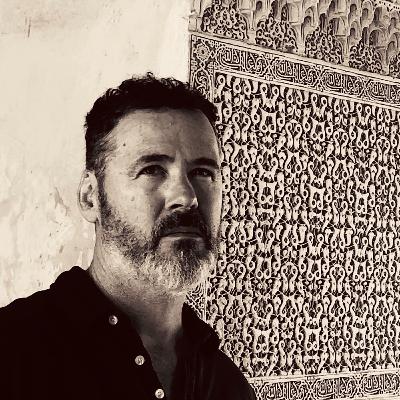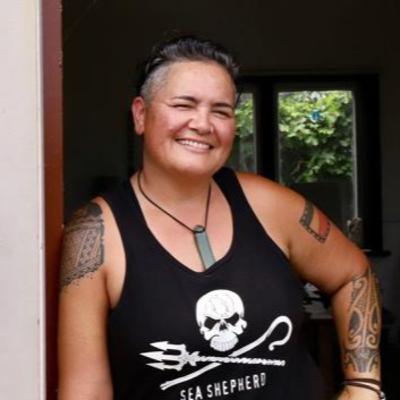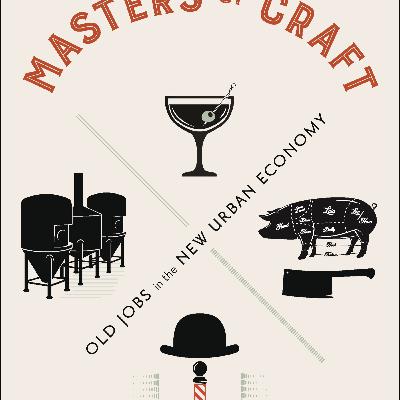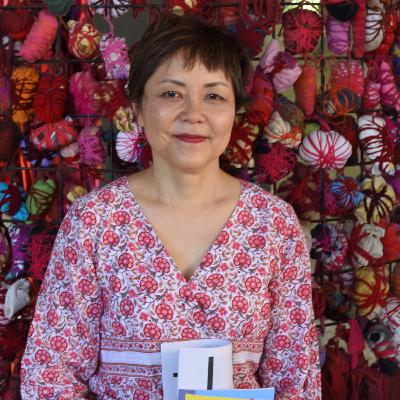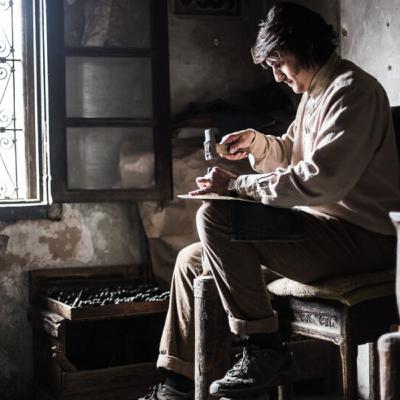Discover Garland magazine
Garland magazine

Garland magazine
Author: Stories behind what we make
Subscribed: 1Played: 19Subscribe
Share
© Stories behind what we make
Description
The stories behind what we make.
Over a five year journey of the Indo-Pacific, we explore beautiful and thoughtful objects. What do these objects tell us about our world today? We see a striking revival of ancient traditions that re-orients us to the future.
Over a five year journey of the Indo-Pacific, we explore beautiful and thoughtful objects. What do these objects tell us about our world today? We see a striking revival of ancient traditions that re-orients us to the future.
34 Episodes
Reverse
Our first podcast of 2021 features one of the most innovative forces in Indian craft, reflecting Ahmedabad’s status as a unique cultural centre.
We speak to Jay Thakkar on the eve of the legendary kite festival in Ahmedabad, and we begin by learning what the city is like during this spectacular event and how COVID has affected the themes of kite design. We discuss his ambitious project on vernacular furniture, which was told previously in our story by Mitraja Bais. We also hear about the five-year-long exchange with a Kutch village Guniyali which culminated recently in the launch of a virtual exhibition with the support of the British Council.
Jay shares with us his thoughts on craft education in India and proposes a “fourth wave” in which designers seek learning from the villagers themselves in location. Finally, we learn some of the deeper values that underpin is work, and a saying of his father’s that money is like wheat. Listen and learn why this is so.
Jay Thakkar is an Associate Professor, Head of Exhibition at CEPT University and Co-founder and Executive Director at Design Innovation and Craft Resource Centre (DICRC) at CRDF, Ahmedabad, India. You visit the virtual exhibition Celebrating Gundiyali here.
22 June 2019, National Gallery of Victoria
This panel was an opportunity to learn from those who are engaged with China as artists or curators.
What are the challenges in connecting with audiences in mainland China?
What opportunities make the effort worthwhile?
How can we maintain contact with the Chinese scene from Australia?
Speakers include:
Yiwei Wu – Founder of Yiwei Art Foundation and SanW Gallery in Shanghai
Vicki Mason – jewellery artist in residence at San W Studio and SIVA Artist Residency Project
Robin Best – Australian ceramicist working in Jingdezhen
Philip Faulks – Melbourne paper cut artist
Wilson Yeung Chun Wai – Creative Events Manager, Museum of Chinese Australian History
Conversation between dragons
Saturday 22 June 2019
This panel explores the creative substance of a dialogue with China. As a nation that seeks to revive its traditional culture, how does this parallel the trajectory of nations around the Pacific Rim? We learn from the dragons not only in China but also in Mexico, Australia and India. Do they still have a place in our lives? Does their relation to unpredictable weather help us acknowledge the reality of climate change? Are there other ancient beliefs that may have a renewed relevance today?
Speakers include:
Mitraja Bais – specialist in Indian craft and culture
Tyson Yunkaporta – Senior Lecturer in Indigenous Knowledges at Deakin University and member of the Apalech clan (west cape)
Yunuen Perez – Mexican-born, Melbourne-based production designer and weaver
Mae Anna Pang – ex-curator of Asian art, National Gallery of Victoria
Tammy Wong Hulbert – Chinese-Australian artist and lecturer at RMIT University
We chat with Brian Parkes, CEO of Adelaide's Jam Factory Craft & Design Centre, about an ambitious series of touring exhibitions that have helped define Australian craft and design in the 21st century.
Ngozi Omeje is a ceramicist who teaches at the Department of Fine and Applied Arts at University of Nigeria, Nsukka. She has been directly influenced by the work of El Anatsui. She has exhibited overseas in exhibitions such as the Cheongju Craft Biennale, but continues to live in Nsukka.
In our conversation, Ngozi discussed a particular method she uses to string ceramic shards from the ceiling to create larger forms. She sees this as a way to transcend the kiln’s size limits and deal with the regular threat of breakage that afflicts ceramics’ transport. The idea came to her when she watched people fishing.
The result is quite emotional. Ngozi talks about the sensation of hugging one of her ceiling works as if picking up a baby and it smiling back to you.
She describes the individual shards as like “leaves.” Each has been imprinted with the palm of her hand. The palm print resembles the veins on a leaf.
For Ngozi, there is no audience to sustain her work in Nigeria. But rather than constantly waiting to be recognised internationally, she decided to make work for the love of it. “It calms my spirit”.
Finally, she talks about the work of making traditional ceramic hives for bees that open up easily so that honey can be extracted without disturbing the colony.
Follow @ngozichukwukaomeje
See: https://garlandmag.com/ngozi-omeje/
Kevin Murray interviews one of the key instigators in Melbourne's street jewellery scene, Melissa Cameron. How did Part B evolve? What does the name mean? What were its other projects? What is its enduring influence?
For more details and images, see https://garlandmag.com/loop/steal-this/.
Pam Hall has extended her practice as an artist in Newfoundland to create an Encyclopedia of Local Knowledge. The three chapters written so far feature the living crafts of Northern Penninsula and Bonn Bay, Fargo and Change Islands and Miawpukek Middle River. We invited Pam to share the story of his epic project.
Read more: https://garlandmag.com/loop/pam-hall-the-encyclopedia-of-local-knowledge/
https://encyclopediaoflocalknowledge.com/
https://pamhall.ca/
Urmila Mohan is an anthropologist who established the Jugaad Project, an open platform for publishing articles on material culture.
Here are some of the topics covered in our conversation:
The meaning of jugaad as everyday innovation
The need for an open global platform to share articles in material culture
How published articles benefit their subjects
Prayer beads as spiritual technology that is only partly replaced by fidget spinners
Articles on bamboo weaving in Java and the infrastructure of Durga Puja in India
The new book publication
https://www.thejugaadproject.pub
http://www.urmilamohan.com/
https://www.thejugaadproject.pub/home/likhai-wood-carving
We speak with Jennifer-Navva Milliken, director of the Museum of Art and Wood about a fascinating project inspired by the iconic lattice wooden screen of the Islamic world.
We speak with the curator of the magnificent exhibition Sutr Santati, in celebration of the 75th anniversary of Indian independence. This exhibition consists of 100 textile works representing an impressive range of techniques including Kutch embroidery, patola, brocades, sequin work, applique, block printing, silk tapestry and ikat.
Co-Obradoiro Galego is a collaborative project by three basketmakers and designer Paula Camiña, looking at biotechniques to help regenerate and revive Galician craft heritage. We speak with Paula about the origins of this project and how it stems from her own roots in the region. We learn about the impact of foresty monoculture and its impact on basketmakers. The use of a biopolymer fibre produced from seafood waste offers a circular path to help promote this traditional craft.
Hanne Brøbech Sønnichsen is the chairperson of Danish Crafts and Design.
For the organisation's Formkraft publication, she recently wrote Greasy Fingers and Practical Research Help Craft Out of the Display Case which reflect on the student revolt against the lack of technical education in their craft program.
"That the students see themselves more as practitioners of craft rather than craft artist (kunsthåndværkere) is perfectly fine. We must – and this also applies to us at DKoD (Danish Crafts & Design Association)- clear up the concepts and remember that ‘craft’ gives associations to handwork, whereas ‘kunsthåndværk’ signals that there is also a certain aesthetic ambition involved."
"Artistic craft is something essential and valuable that we must pass on to the next generation. Otherwise, the basic know-how and foundation for Danish design will lose its shape."
In this podcast, we learn of the background to this controversy, the specifically Danish understanding of craft, and also her opinions about craft education. Underlying this is her philosophy that "hand teaches hand" .
We speak with Hillevi Skoglund about a Swedish project involving thousands of participants who each plant and process a plot of linen.
See our website for more information.
Our current issue, titled Know How: The Grammar of Making, features an article by Patrick Webb, titled Maker Mythologies Classical Origin Stories for the Crafts, which is a fascinating overview of the key role played by craft in the ancient understanding of the world as a divine creation. This is a taste of the rich offerings from his blog called Real Finishes, which I highly recommend. What intrigues me about Patrick is that he articulates this complex world knowledge not as a university professor in humanities, but as an exponent of his own craft, as a plasterer.
Patrick offers a view of the world through the eyes (and hands) of a plasterer. For Patrick, plaster is part of the process by which humans were able to leave their caves and venture out into the world. Of course, the very word "ceiling" derives from the importance of plaster in rendering impermeable membranes for our shelter.
Plaster is by nature a demanding substance. Beginning as a liquid, it quickly sets when exposed to air, which causes Patrick to believe that "the material is the master."
When I ask Patrick whether craft could be considered a form of knowledge, he doesn't shy from its dimension as labour: "What I do requires a great bit of physical exertion. You build muscles, you sweat." Rather than drudgery, Patrick sees the physicality of plastering as good for both physical and mental health.
Nonetheless, Patrick does advocate for a kind of knowledge that is revealed in the doing. When he reaches the limits of describing this in his writing, Patrick then turns to poetry to reflect this haptic understanding.
Patrick offers a critique of Plato, particularly the way his academy required students to know geometry, yet would not admit artisans who he saw as a lower form of life.
I was curious how Patrick gathers so much knowledge outside the modern academy of the university. For Patrick, the university is "a place of intellect and cognition" and therefore not a natural place for the "arts and crafts". Craft knowledge is embodied experience that is best taught through the apprenticeship system.
I wonder if that is necessarily so, especially given Patrick's critique of Plato's academy for the exclusion of artisans.
Finally, I brooch the issue of gender in Patrick's language, which frequently mentions "craftsman". Patrick says that he did ask some female students what they preferred to be called, and found "craftsman" the most popular.
What I appreciate while listening to Patrick is his generosity of knowledge. He puts great effort into his various writings without the systemic rewards that are built into academic careers. It is a testament to knowledge as a currency that we can all share.
We interview Neke Moa to learn about being a custodian of pounamu and how she uses it to connect with atua as guiding spirits.
More info: https://garlandmag.com/loop/neke-moa-deities/
Glenn Adamson speaks about the new publication project, Material Intelligence. He reflects on how this project evolved from his return to the Chipstone Foundation in Milwaukee. Adamson describes the need in craft writing to keep in mind the publication as an object, in this case, a PDF which will become a book. In terms of readership, he aims to engage with a scientific community who are practically working with materials. We discuss the nature of "material intelligence": how thinking might have a craft-base and its relationship to the modernist principle of "truth in material".
Finally, Adamson offers a book recommendation by technology writer, John Markoff: Machines of Loving Grace: The Quest for Common Ground Between Humans and Robots.
We speak with Jesse Adams Stein, the author of Industrial Craft in Australia: Oral Histories of Creativity & Survival (Palgrave Macmillan 2021)
For more information, see our post: https://garlandmag.com/loop/jesse-adams-stein/
We interview Richard Ocejo, author of Masters of Craft: New Jobs in the Old Economy (2017). This intriguing book described a trend among white middle-class men in taking on manual trades. These included bartender, barber, butcher and distiller. We explore how this differentiates from the hipster figure as an ironic consumer and the complications of the term "master". Then we turn to the impact of the pandemic on these gentrified trades. Their dependence on an audience means the lockdown did have a negative effect on their work.
Ocejo ends with a powerful tale of a local potter who teaches his craft who told him:
"The world doesn't need more plates. The world doesn't need more cups. That's not what we're doing here. We're trying to connect people here with an ancient practice and that's what makes us who we are."
Yuko Kikuchi, Professor of Craft History at Kanazawa College of Art, shares her professional journey beginning with the Beat Generation in California. Moving to England, she was introduced to the Arts and Crafts Movement, through which she re-discovered the Mingei folk craft movement of her home country, Japan. She reflects on the Western critic of Mingei as elitism by identifying its evolution inside Japan into a modern commodity through MUJI and popular culture through manga comics. We also talk about Japan's relationship to Taiwan, the unsustainability of craft in Kanazawa and the gender imbalance in Japanese society.
Transcript
Hamza El Fasiki is a geometer, brass smith, bookbinder, Andalusian Oud musician, and founder of a Morocco arts studio. He offers an important perspective as a young person who has embraced the world of Moroccan traditional crafts. This gives him particular insight into the differences between modern and traditional worlds.
Read more here.



